Are you or someone you know struggling with hoarding tendencies?
Understanding the causes, types, and signs of hoarding is essential in order to provide help and support to those in need.
In this article, we will delve into the complexities of hoarding behavior, how to recognize it, and most importantly, how to approach and help a hoarder.
From professional therapies to tips for cleaning and organizing a hoarder’s home, we have you covered.
Let’s get started on the journey to understanding and assisting hoarders.
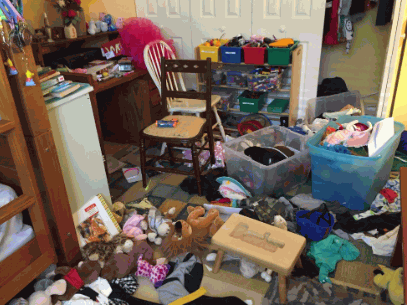
What Is Hoarding?
Hoarding is a complex mental health disorder characterized by the excessive accumulation of possessions, leading to cluttered living spaces and significant distress.
Individuals experiencing hoarding disorder face challenges in discarding items, often attaching sentimental value or a perceived need for each possession. This behavior can result in living spaces becoming overrun with belongings, making it difficult to navigate through the clutter, maintain hygiene, or even access essential items when needed. The emotional toll of hoarding can lead to isolation, feelings of shame, anxiety, and depression, affecting overall well-being.
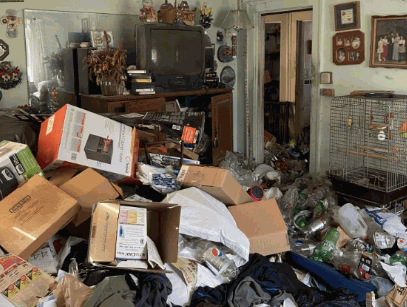
Understanding Hoarders
To understand hoarders, it’s essential to recognize their persistent hoarding tendencies, which often stem from emotional distress and underlying mental health issues.
Hoarding is not merely about acquiring and accumulating possessions; it goes much deeper into the psyche of individuals experiencing this behavior. The compulsion to hold onto items, often deemed useless by others, can be a coping mechanism for unresolved emotions and traumas.
This accumulation provides a sense of security and comfort, shielding them from facing their inner turmoil. The fear of letting go can be overwhelming, as each possession holds sentimental value and represents a part of their identity.
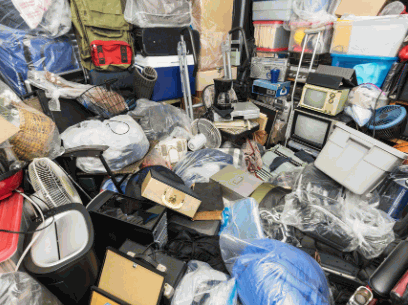
What Are The Causes Of Hoarding?
The causes of hoarding disorder can be multifaceted, often involving underlying anxiety disorders, genetic predisposition, and environmental factors. Family members may play a crucial role in either exacerbating or alleviating hoarding tendencies.
Individuals with hoarding disorder often experience intense feelings of anxiety, which may manifest in the form of excessive acquiring and difficulty discarding possessions. These behaviors can be influenced by a range of anxiety disorders, such as generalized anxiety disorder or obsessive-compulsive disorder.
The strong genetic component of hoarding disorder also suggests that familial traits and predispositions can contribute to the development of hoarding tendencies. The dynamics within a family unit can either reinforce hoarding behaviors by enabling or discouraging them through supportive interventions and education.
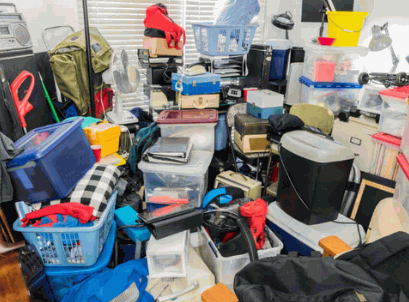
What Are The Types Of Hoarders?
Different types of hoarders exhibit varying patterns of hoarding behavior, from compulsive acquisition of items to sentimental attachment to possessions. Understanding these distinctions is crucial in tailoring effective interventions and support.
Compulsive hoarders often accumulate objects regardless of their value or usefulness, driven by an irrational fear of discarding something that may be needed in the future. On the other hand, individuals who attach sentimental value to possessions tend to hold onto items due to emotional connections or memories associated with them.
Compulsive hoarders may acquire items through excessive shopping, freebies, or even stealing, whereas those with sentimental attachments often inherit possessions or collect items that remind them of significant events.
Signs And Symptoms Of Hoarding
Recognizing the signs and symptoms of hoarding is essential for early intervention and support. These may include excessive clutter, difficulty discarding items, and severe emotional distress when faced with decluttering.
Hoarding symptoms can also manifest as a reluctance to allow others into one’s living space due to embarrassment or shame over the clutter.
Individuals dealing with hoarding may experience heightened anxiety at the mere thought of parting with possessions, attributing deep sentimental value to even the most mundane objects.
This attachment to belongings can hinder their ability to live comfortably and function effectively in their environment.
In addition, hoarding behaviors often lead to social isolation and strained relationships, as the condition can cause rifts with family members or roommates who may not understand the gravity of the situation.
How To Recognize Hoarding Behavior?
Identifying hoarding behavior involves observing persistent difficulties in managing possessions, overwhelming clutter in living spaces, and specific triggers that exacerbate hoarding tendencies.
A hoarding problem can manifest in various ways, such as compulsively acquiring free items regardless of need, holding onto broken or unusable items, or feeling intense distress at the mere thought of discarding belongings.
For instance, an individual with a hoarding problem may struggle with making decisions about what to keep or throw away, leading to indecisiveness and an accumulation of possessions over time.
Triggers, like experiences of loss, trauma, or indecision, can significantly impact hoarding episodes, causing a sudden escalation in acquiring and saving behavior.
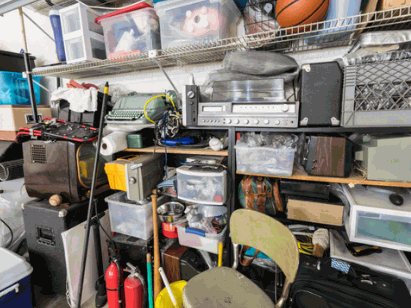
What Are The Physical And Emotional Signs Of Hoarding?
The physical and emotional signs of hoarding can manifest as chronic stress, emotional distress, and a sense of overwhelm. Mindfulness techniques and stress-management strategies can be beneficial in addressing these challenges.
Hoarding behavior often leads to the accumulation of possessions beyond what one can realistically manage, cluttering living spaces and contributing to feelings of being suffocated. Individuals struggling with hoarding may experience physical symptoms such as elevated heart rate, muscle tension, and fatigue due to the constant state of stress their living conditions create.
Mindfulness practices, including deep breathing exercises and meditation, have been shown to help individuals with hoarding tendencies manage their stress levels more effectively.
How To Help A Hoarder?
Supporting a hoarder involves offering motivation, understanding, and empathetic communication. Providing consistent support and encouragement can help individuals navigate the challenges of decluttering and seek professional assistance.
For many hoarders, the task of letting go of belongings can feel overwhelming and daunting. It is crucial for their loved ones and family members to create a safe and supportive environment where they feel understood and accepted. By expressing empathy and avoiding judgment, family members can play a significant role in inspiring the hoarder to take the necessary steps towards decluttering.
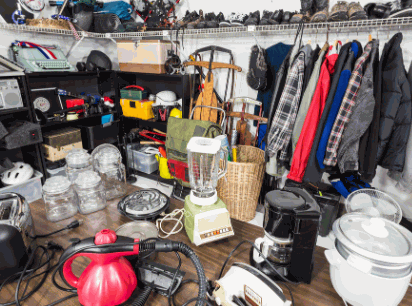
What Are The Dos And Don’ts When Dealing With A Hoarder?
When interacting with a hoarder, it’s important to practice urge surfing, engage in open and non-confrontational conversations, and address potential family conflicts that may arise from hoarding behaviors.
Understanding the concept of urge surfing can be extremely beneficial when supporting a hoarder. This technique involves riding out the wave of strong impulses without acting on them immediately, allowing the individual to observe their thoughts and feelings without judgment.
When initiating conversations with a hoarder, it’s crucial to approach the topic with empathy and understanding. Use active listening skills to show genuine interest and validate their experiences, creating a safe space for them to share their concerns.
Family conflicts can often escalate when dealing with hoarding issues. Collaborative problem-solving, setting clear boundaries, and seeking professional help when needed can help mitigate tensions and foster a more supportive environment for the hoarder.
How To Approach A Hoarder About Their Behavior?
Approaching a hoarder about their behavior requires sensitivity, empathy, and a focus on exploring potential hoarding treatment options and therapy. Gently discussing the impact of hoarding on their well-being can be a crucial first step.
It’s essential to create a safe and non-judgmental environment during these conversations, allowing the individual to express their feelings and concerns without fear of criticism. By acknowledging the emotional attachment they have to their belongings, one can start understanding the root causes of their hoarding problem. Encouraging open communication and active listening can pave the way for discussing the possibility of seeking professional help, hoarding therapy, or support groups. It’s important to convey that treatment and therapy are not about ‘fixing’ them but about providing tools for a healthier lifestyle.
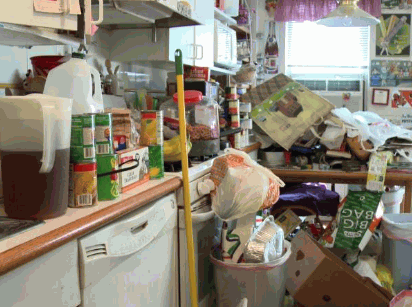
Professional Help For Hoarders
Professional help for hoarders often involves therapy sessions, cognitive behavioral therapy (CBT) interventions, and support groups such as Clutterers Anonymous. Platforms like BetterHelp offer online counseling for individuals seeking assistance.
Cognitive behavioral therapy (CBT) plays a crucial role in addressing the underlying thought patterns and behaviors associated with hoarding tendencies. Through CBT, individuals can learn effective strategies to manage their clutter, change negative thought patterns, and develop healthier coping mechanisms. Group treatments, like those provided by support groups such as Clutterers Anonymous, offer a sense of community and understanding, fostering a supportive environment for individuals struggling with hoarding tendencies. Seeking professional help and joining support groups are essential steps towards overcoming the challenges of hoarding disorder.
What Type Of Therapies Can Help A Hoarder?
Therapies that can aid hoarders include cognitive behavioral therapy (CBT), skills training, and interventions developed by experts like Gail Steketee, MD, PhD, and Randy O. Frost, PhD. These approaches focus on addressing underlying issues contributing to hoarding behavior.
Cognitive behavioral therapy (CBT) plays a vital role in helping hoarders challenge their distorted thoughts and beliefs related to acquiring and saving items. This therapy assists individuals in developing practical strategies to manage their possessions and cope with emotional attachments. Skills training equips hoarders with the organizational and decision-making skills necessary for decluttering their living spaces. Experts such as Gail Steketee and Randy O. Frost have pioneered interventions tailored to address the specific needs and challenges faced by hoarders, offering specialized guidance and support throughout the recovery process.
What Are The Medications Used For Hoarding Disorder?
Medications prescribed for hoarding disorder may include those used for treating OCD, anxiety disorders, and post-traumatic stress disorder (PTSD). These medications aim to alleviate symptoms associated with hoarding behaviors.
For individuals with hoarding disorder, selective serotonin reuptake inhibitors (SSRIs) such as fluoxetine and sertraline are often recommended, as they have been shown to be effective in reducing the compulsive behaviors seen in OCD.
Anti-anxiety medications like benzodiazepines may help manage the overwhelming feelings of anxiety and distress that can accompany hoarding tendencies.
Certain antidepressants, like venlafaxine, are sometimes used to address symptoms of PTSD that may contribute to hoarding behaviors.
Tips For Cleaning And Organizing A Hoarder’s Home
Cleaning and organizing a hoarder’s home requires careful planning, decluttering strategies, and adherence to safety precautions to ensure a systematic and safe process of transforming living spaces.
One crucial step in this process is to start small and focus on one area at a time. Begin with a less cluttered room to build momentum and increase motivation.
- Utilize storage bins or labeled boxes to categorize items
- Dispose of expired or duplicate items responsibly
- Donate or recycle things that are no longer needed
Implementing a decluttering routine can help prevent further accumulation of possessions, ensuring a more organized and manageable living environment.
How To Create A Plan For Cleaning And Organizing?
Creating a comprehensive plan for cleaning and organizing involves considerations for individuals with ADHD, integrating mindfulness practices like Mindful Breathing Meditation, and leveraging family members as motivators for positive change.
It is essential to tailor the cleaning and organizing plan to the unique needs and challenges of those dealing with ADHD. Incorporating mindfulness techniques such as Mindful Breathing Meditation can help individuals with ADHD stay focused and calm while decluttering their spaces.
Involving family members in the process can provide crucial support and encouragement. Their presence can serve as a motivating factor, making the task less daunting and more enjoyable.
Gain insights: How Does Steam Cleaning Work
What Are The Safety Precautions When Cleaning A Hoarder’s Home?
Safety precautions when cleaning a hoarder’s home include engaging in group treatment sessions to address hoarding behaviors, seeking professional hoarding support for guidance, and establishing clear communication channels among family members involved in the cleanup process.
Group treatment sessions can be particularly beneficial in the context of hoarding cleanup, as they provide a supportive environment where individuals can share experiences and strategies. These sessions offer a sense of solidarity and give the power torment, encouraging individuals to work together towards overcoming hoarding tendencies.
Professional hoarding support is essential for ensuring a thorough and efficient cleanup. Experts in hoarding behavior understand the complexities involved and can offer valuable insights and practical solutions to streamline the process. Their guidance can help prevent potential health hazards and ensure the safety of everyone involved.
Effective communication among family members is paramount during a hoarding cleanup. Clear and open dialogue helps in setting expectations, delegating tasks, and addressing any concerns that may arise. It fosters teamwork and cooperation, ultimately leading to a more successful and harmonious cleaning process.
